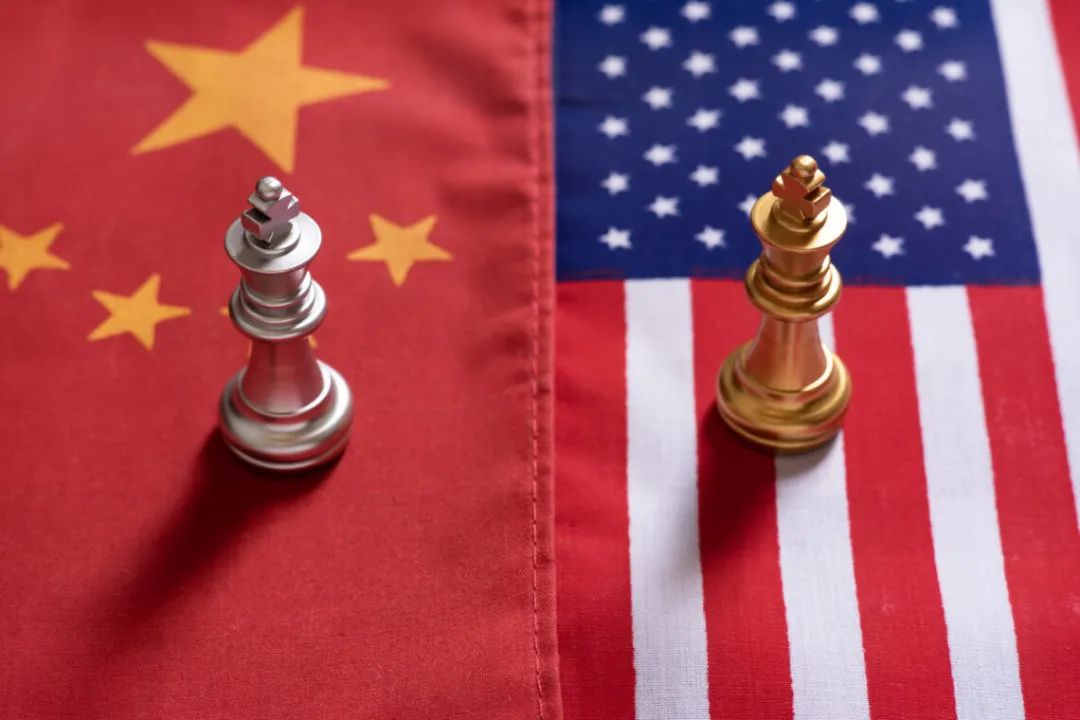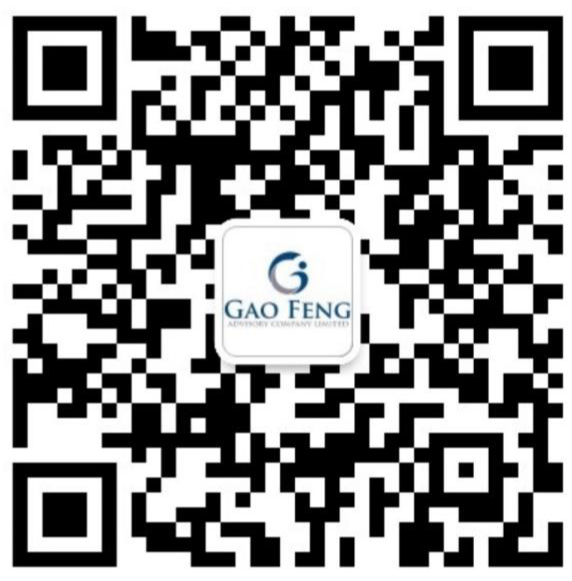Gao Feng Viewpoint | Prospects for 2022

By Edward Tse
January 2022
A recent Gao Feng Advisory Viewpoint authored by CEO Dr. Tse. English translation for article published in Yabuli Standpoint, December 2021 issue.
For people in China, the last couple of years have been unusual. Reasons included the COVID-19 pandemic, changing international geopolitics and the evolving domestic situation.
Across the world, many countries have been hit hard by the pandemic with economies adversely affecting the very fabric of society. The US Federal Reserve has been printing money at an unprecedented rate leading to a spike in inflation. The US Consumer Price Index rose 6.8% year-on-year in November, and for the sixth consecutive month, inflation exceeded 5%, reaching a 40-year high. On the other hand, China’s GDP grew 9.8% in the first three quarters of this year, well above the IMF's previous 2021 global estimate of 5.6% GDP growth. China's imports and exports of goods reached RMB 31.67 trillion in the first 10 months, a 22.2% year-on-year increase. Foreign direct investment (FDI) reached US$100.74 billion between January and July, up 30.9% year-on-year, surpassing the US and putting China at the top of the global ranking.
In geopolitics, the relationship between China and the US has been tense, notably in areas such as US sanctions in key technologies and key Chinese tech companies. In addition, global issues such as climate control and emissions reduction have made the overall situation even more challenging.
China’s domestic situation has also evolved. In its 14th Five-Year Plan, China has set 20 major goals covering economic development, innovation, people's well-being, environmental protection and security. In addition, China has implemented its "dual circulation" economic strategy. While the domestic cycle (that of supply and demand) will become the main driver of China’s economy, the international cycle of trade will continue to manifest thereby reinforcing the domestic one and vice versa. With the increasing commercial applications of technologies such as artificial intelligence (AI), the Internet of Things (IoT), 5G, cloud computing and blockchain, China has entered into a new era of technological innovation. The country is increasingly being recognized as one of the world’s leading digital economies.
In the 14th Five-Year Plan, China has further emphasized its strategic development goal of “adhering to the core position of innovation and accelerating the establishment of strong science and technology.” China is committed to achieving technological self-sufficiency, building on its continuous opening up efforts and significantly increasing investment in science and technology. At the same time, measures such as anti-monopoly regulations, policies on more stringent control of financial risks, reforms in out-of-school tutoring, passing of new laws on data security and personal information protection, and others are aimed at ensuring better governance of the country.

Source: Baidu
What will happen in 2022?
It is highly likely that the pandemic will continue well into 2022 and we can also reasonably expect that the international situation will continue to be volatile. From the financial perspective, possibly the most critical issue is how the US Federal Reserve will handle its money supply given the already high and prolonged inflation. Some believe that the Fed would raise interest rates, probably more than once, in 2022, but others believe it could continue to print money. In any case, this will add more uncertainties to the world. Some people even believe that 2022 may be a repeat of the 1997 Asian financial crisis or the 2008 Wall Street collapse. All these possibilities cannot be ignored.
On the geopolitical front, the attitude of Western countries, especially that of the US towards China is unlikely to improve significantly, and in some cases may even deteriorate. It appears that the US will continue to crack down on trade and technology exchanges with China. At the same time, the Regional Comprehensive Economic Partnership Agreement (RCEP) will start to be implemented in 2022, creating favorable conditions for free trade to manifest in the region.
In the Chinese government’s Central Economic Work Conference chaired by President Xi Jinping in December, the word "stability" appeared 25 times, in contexts such as "seeking progress in a stable manner…, a stable economy … a stable society and stable politics.” The Central Economic Conference has proposed that a combination of macro policies, micro policies, structural policies, science and technology policies, reform and opening up policies, regional policies and social policies will be jointly implemented for promoting China’s stable economic development.
As the Communist Party of China enters its second centennial, 2022 will be a year of historical significance. The Chinese government will more prudently manage the country’s economic development, resources and environment. The Chinese government will put more efforts into enhancing China’s domestic resources production for securing domestic output, improving agricultural production, and promoting conservation of resources. In addition, more emphasis will be placed on risk management and regulations. Enterprises, both state-owned and privately-owned, will need to better mitigate potential risks from sources such as real estate sector credit risks.
The Chinese government will likely continue to improve its public services, especially in areas of education, healthcare, housing, and pension, with the purpose of achieving the country’s strategic goal of common prosperity. China will also move swiftly towards carbon neutrality on its way towards the country’s green transformation.
Private sector capital will continue to play an important role in the country’s economic development; however, the Chinese government will also continue to make sure that capitalist pursuits will not compromise the collective well-being of the general public and that of the state.

Source: Baidu
For Chinese corporate decision makers, 2022 could be a very unusual year. Uncertainties and volatility in the global economic context and geopolitics will linger on, with a definite probability of major downturns and even some “Black Swan” events. How China will proactively manage or react to such external changes will also drive changes in domestic conditions, leading to possibly new turns in policies, regulations, social priorities and demand pattern changes.
With these potential, but significant changes, corporate leaders need to be much more sophisticated in their strategic thinking and their points of view on the future. They should be aware of potentially game-changing issues such as geopolitics, technology and its ethics, data governance, and new policies for addressing important global issues.
The concepts of business strategies have evolved over time. Three decades ago, corporate strategists liked to discuss the trade-offs between “diversification” (building conglomerates with portfolios of vast and often unrelated businesses, aiming at capturing abundant opportunities in the external environment) versus “focus” (do business only in one’s area of strength, building on the company’s own “core competences”). Since then, the “core competence (or capabilities)-based strategy” had become the mainstream strategy framework in business, shaping how company executives made their strategy decisions. However, neither of these two concepts were able to fully explain the corporate growth phenomena in China, especially since some of its companies stepped on their growth gas pedals since the commercial manifestation of the wireless internet at around the late 2000’s. In 2014 I proposed an alternate way of strategy thinking based on the notion of how companies can go through rounds of "multiple jumps". This concept exemplifies the notion that companies can leap from an existing situation to a new opportunity even if they don’t have all the needed capabilities to compete in the new area. Corporate leaders taking this approach constantly evaluate the attractiveness of the new opportunity versus to what extent they can build the capabilities needed to compete in the new area through either building the capabilities themselves or through collaborative partnerships (“ecosystems”). I called this approach, the “Third Way of Strategy” as opposed to the two concepts mentioned above. It bridges the theoretical gap between these two concepts.
In the past five to ten years, various “management experts” in China have suggested that companies only needed to adopt simple ideas such as seeking "an advantaged position", building "ecosystems", undertaking “digital transformation”, or simply being “nice guys.” This way, the companies would be fine. In the backdrop of radical changes, these simple concepts by themselves are clearly not enough and sometimes may even inhibit the ability of the companies to capably respond. Business leaders must always keep the big picture in mind and develop an appropriate holistic view of not only today’s context but also that of the future. They also must recognize that situations do not normally develop in a simple linear way but are often non-linear, discontinuous, often unexpected, and multidimensional. At the same time, geopolitical or policy factors could create "red lines" for companies, stipulating new constraints on how they could formulate their strategies.
In such a fast and intensively changing landscape, one or two simple strategic concepts or tools cannot help address the most critical issues for businesses. The essence of strategy in such context is to be able to make appropriate adjustments in a dynamic manner with a sophisticated view of the future, against some anticipated red lines. Doing so requires deeper strategic thinking, a scenario-driven and holistic view of the world, and most importantly a new and comprehensive toolbox.
About the Author
Dr. Edward Tse is founder and CEO, Gao Feng Advisory Company, a founding Governor of Hong Kong Institution for International Finance, Adjunct Professor of School of Business Administration at Chinese University of Hong Kong, Adjunct Professor at HKU SPACE and Professor of Managerial Practice at Cheung Kong Graduate School of Business. He started his strategy consulting career at McKinsey’s San Francisco office in 1988 before returning to Greater China in the early 1990’s. He became one of the pioneers in China’s management consulting industry, by building and running the Greater China operations of two leading international management consulting firms (BCG and Booz) for a period of 20 years. He has consulted to hundreds of companies, investors, start-ups, and public-sector organizations (both headquartered in and outside of China) on all critical aspects of business in China and China for the world. He also consulted to a number of Chinese local governments on strategies, state-owned enterprise reform and Chinese companies going overseas, as well as to the World Bank and the Asian Development Bank. He is the author of several hundred articles and five books including both award-winning The China Strategy (2010) and China’s Disruptors (2015), as well as 《竞争新边界》 (The New Frontier of Competition), which was co-authored with Yu Huang (2020).


Gao Feng Advisory
Gao Feng Advisory Company is a professional strategy and management consulting firm with roots in China coupled with global vision, capabilities, and a broad resources network
Wechat Official Account:Gaofengadv
Shanghai Office
Tel: +86 021-63339611
Fax: +86 021-63267808
Hong Kong Office
Tel: +852 39598856
Fax: +852 25883499
Beijing Office
Tel: +86 010-84418422
Fax: +86 010-84418423
E-Mail: info@gaofengadv.com
Website: www.gaofengadv.com
Weibo: 高风咨询公司
